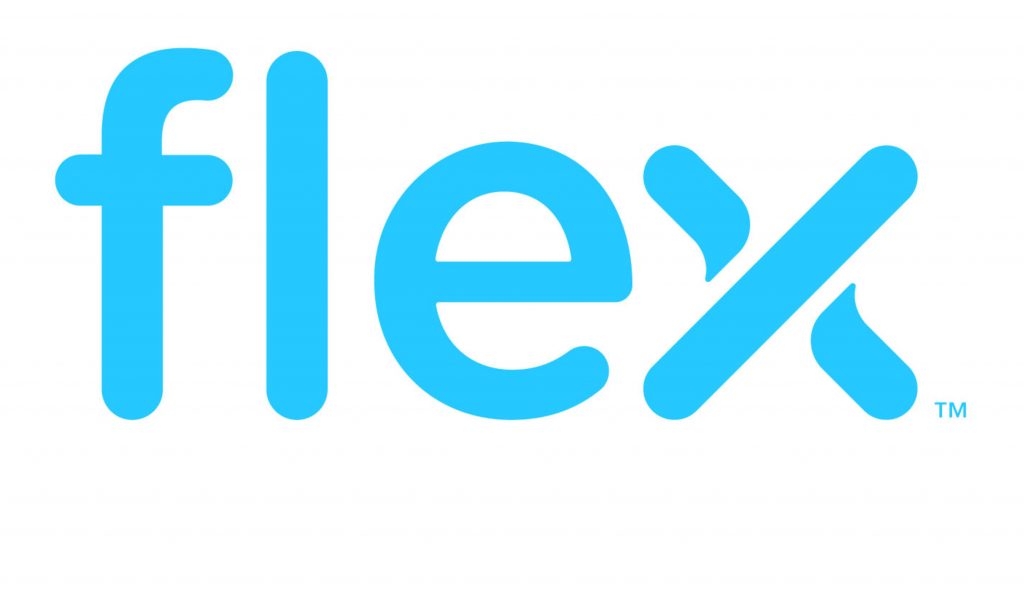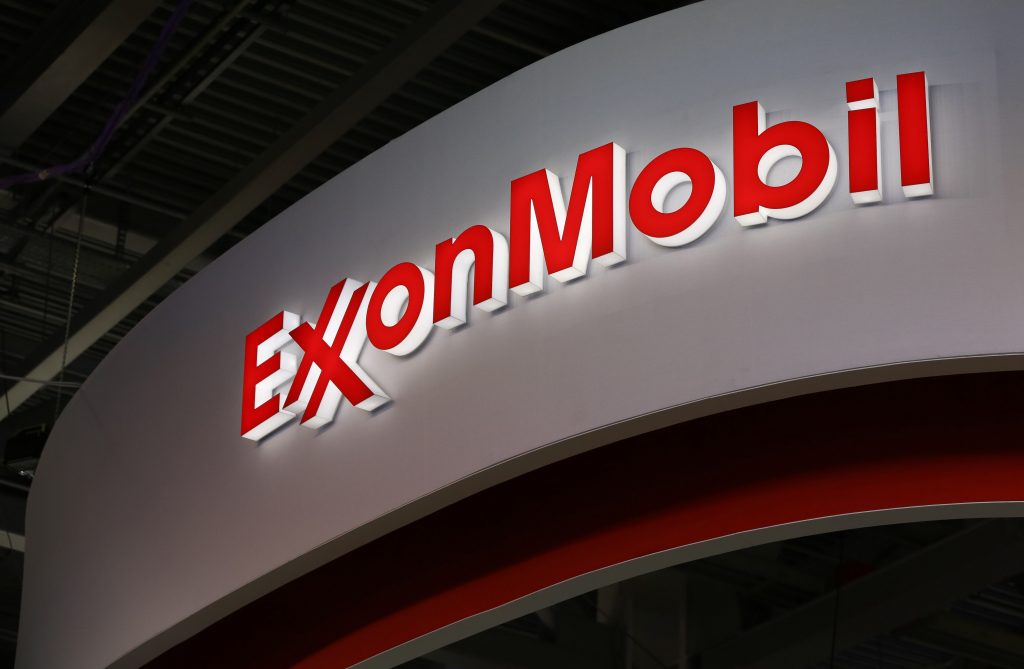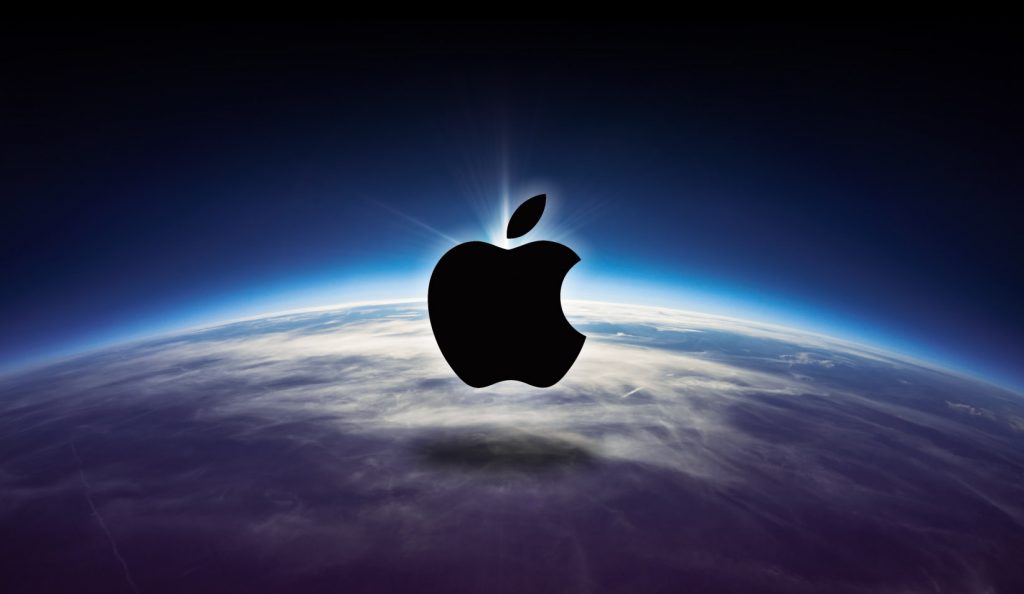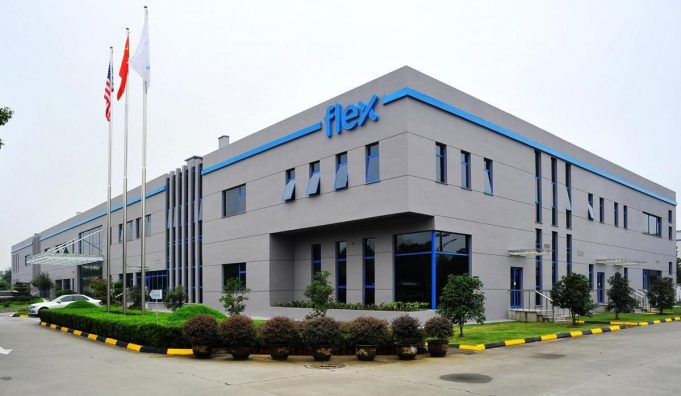This report provides the last five years revenues and revenue growth of Flex Ltd. (FLEX) from 2012 to 2016. Flex generated a total of $24.4 billion revenues during 2016. Flex reported a revenue growth of -6.6% year-over-year during 2016. The revenues and the revenue growth correspond to the fiscal year ending in March.
FLEX REVENUES FROM 2012 TO 2016
Here are the revenues and the revenue growth details of Flex during the last five years:
- Flex generated a total of $29.3 billion revenues during 2012. Flex reported a revenue growth of 3.2% year-over-year during 2012.
- Flex generated a total of $23.6 billion revenues during 2013. Flex reported a revenue growth of -19.7% year-over-year during 2013.
- Flex generated a total of $26.1 billion revenues during 2014. Flex reported a revenue growth of 10.8% year-over-year during 2014.
- Flex generated a total of $26.1 billion revenues during 2015. Flex reported a revenue growth of 0.2% year-over-year during 2015.
- Flex generated a total of $24.4 billion revenues during 2016. Flex reported a revenue growth of -6.6% year-over-year during 2016.

WHY ANALYZE REVENUE GROWTH?
Revenue growth is the most commonly analyzed financial metric. Revenue Growth is the percent increase (or decrease) of a company’s revenue between two time periods. It is computed by using the following formula: ((revenues during the time period two – revenues during the time period one) / revenues during the time period one)*100. If the time periods are two consecutive years, then the revenue growth is referred to as the annual revenue growth year-over-year. If the time periods are two consecutive quarters, then the revenue growth is referred to as the quarterly revenue growth quarter-over-quarter. If the time periods refer to the same quarter in the two consecutive years, then the revenue growth is referred to as quarterly revenue growth year-over-year. In case the time periods are two non-consecutive years, then the revenue CAGR (Commutative Annual Growth Rate) is computed.
Revenue growth analysis is important for a number of reasons. First, it helps in understanding how a business is performing. If the revenue growth rates are positive, it means the business is performing well and the revenues are increasing. If the revenue growth rates are negative, it means the revenues are declining and the company needs to take measures to increase them. If they don’t, the company will continue to shrink. Second, a company’s historical revenue growth analysis along with the market size and market share analysis helps in forecasting the future revenues of a company. Third, a comparison of a company’s growth rates with its competitors helps in determining who is winning more business. A revenue growth higher than the industry average translates into increasing market share. Companies with very high revenue growth rates have the potential to be the industry disrupters.
FLEX RANKING

With $24.4 billion revenues, Flex ranked number 112 in the R&P; Research list of top-3000 public companies in the US by revenues during 2016. Each one of the top-3000 companies generated more than $50 million of annual revenues during 2016.
The top-20 companies in the US by revenues during 2016 were:
- Walmart ($482.1 billion)
- ExxonMobil ($226.1 billion)
- Berkshire Hathaway ($223.6 billion)
- Apple ($215.6 billion)
- McKesson ($190.9 billion)
- UnitedHealth Group ($184.8 billion)
- CVS Health ($177.5 billion)
- General Motors ($166.4 billion)
- AT&T; ($163.8 billion)
- Ford Motor ($151.8 billion)
- AmerisourceBergen ($146.8 billion)
- Amazon ($136 billion)
- Verizon ($126 billion)
- General Electric ($123.7 billion)
- Cardinal Health ($121.5 billion)
- Costco ($118.7 billion)
- Walgreens Boots Alliance ($117.4 billion)
- Chevron ($114.5 billion)
- Kroger ($109.8 billion)
- Express Scripts Holding ($100.3 billion)
For the purpose of performance benchmarking of a company with a sector or industry average, R&P; Research associates every company with one sector and one industry. An industry consists of companies with related/similar business models. A sector comprises of a group of related/similar industries. For example, Life Sciences sector is comprised of following industries: Pharmaceuticals; Medical Devices; Biotechnology; Diagnostics & Scientific Instruments.
Flex is associated with Technology Sector and Technology-Other Industry.
With $24.4 billion revenues, Flex ranked number 15 of all the companies in the US Technology sector. There were a total of 406 public companies in the US Technology sector that had revenues greater than $50 million during 2016.
The top-10 companies in the US Technology sector by revenues during 2016 were:

- Apple ($215.6 billion)
- Amazon ($136 billion)
- Alphabet ($90.3 billion)
- Microsoft ($85.3 billion)
- IBM ($79.9 billion)
- Intel ($59.4 billion)
- Hewlett Packard Enterprise ($50.1 billion)
- Cisco Systems ($49.2 billion)
- HP ($48.2 billion)
- Oracle ($37 billion)
Technology sector is comprised of the following industries: Computers Systems and Peripherals; Software; Semiconductor; IT Consulting and Outsourcing Services; Networking Equipment and Services; Internet; Other. The definitions for each of the industries is as follows:
- Computers Systems and Peripherals industry includes companies primarily engaged in manufacturing of personal computers, servers, mainframes, workstations, and other computer accessories and peripherals such as storage drives, mice, keyboards and printers. It also includes manufacturers of mobile phones and tablets.
- Software industry includes businesses providing software products such as operating systems, productivity suites, enterprise software, data and analysis software, advertising and marketing software, engineering and manufacturing software, networking software, and IT management software. It also includes companies providing industry-specific software focused on different sectors such as Financials, Automotive, Telecom, Utilities, Travel, Real Estate, Media, and Publishing.
- Semiconductor industry includes companies primarily engaged in manufacturing and distribution of semiconductor products such as microprocessors, chipsets, motherboards, flash memory, and wired and wireless connectivity products. It also includes companies that provide semiconductor equipment and services to the semiconductor industry.
- IT Consulting and Outsourcing Services industry includes companies primarily engaged in providing information technology consulting and outsourcing services to other businesses. The services include IT consulting, systems integration, application development and management, IT infrastructure management, and network operations management.
- Networking Equipment and Services industry includes companies primarily engaged in manufacturing and distribution of networking and communications equipment for transporting data, voice, and video traffic across intranets, extranets, and the Internet. The key products include routers and switches for local and wide-area networks, cable modems, teleconferencing equipment, and wireless access points.
- Internet industry includes Internet-based businesses providing products and services such as search engines, social networking, web hosting, email, domain name registration, and eCommerce. It also includes industry information/services portals focused on different sectors such as Financials, Automotive, Travel, Health, Real Estate, Media, and Publishing.
- Other industry includes companies providing products such as photocopiers, fax machines, point of sale machines, audio/video technologies, and video games. It also includes technology companies that are not part of other six technology industries.
With $24.4 billion revenues, Flex ranked number 3 of all the companies in the US Technology-Other industry. There were a total of 44 public companies in the US Technology-Other industry that had revenues greater than $50 million during 2016.
The top-10 companies in the US Technology-Other industry by revenues during 2016 were:

- Tech Data ($26.4 billion)
- Avnet ($26.2 billion)
- Flex ($24.4 billion)
- Arrow Electronics ($23.8 billion)
- Jabil Circuit ($18.4 billion)
- SYNNEX ($14.1 billion)
- CDW ($14 billion)
- TE Connectivity ($12.2 billion)
- Xerox ($10.8 billion)
- Corning ($9.4 billion)
COMPANIES SEGMENTATION
To identify and analyze high/low growth or most/least profitable similar-size companies in different sectors or industries, R&P; research classifies all companies into different segments based upon their revenues, revenue growth, and net profit margins.
Based upon their annual revenues, the companies are classified into one of the following four segments:
- Mega companies, having revenues greater than $50 billion.
- Very Large companies, having revenues between $10 billion and $50 billion.
- Large companies, having revenues between $1 billion and $10 billion.
- Mid-size companies, having revenues between $50 million and $1 billion.
With $24.4 billion revenues, Flex was in the Very Large companies revenue segment during 2016. There were a total of 239 companies in the Very Large companies revenue segment during 2016.
Based upon their annual revenue growth, the companies are classified into one of the following eight segments:
- Very High positive growth companies, having annual revenue growth greater than 50%.
- High positive growth companies, having annual revenue growth between 20% and 50%.
- Medium positive growth companies, having annual revenue growth between 5% and 20%.
- Low positive growth companies, having annual revenue growth between 0% and 5%.
- Low negative growth companies, having annual revenue growth between -5% and 0%.
- Medium negative growth companies, having annual revenue growth between -20% and -5%.
- High negative growth companies, having annual revenue growth between -50% and -20%.
- Very High negative growth companies, having annual revenue growth less than -50%.
With -6.6% revenue growth year-over-year, Flex was in the Medium negative revenue growth segment during 2016. There were a total of 448 companies in the Medium negative revenue growth segment during 2016. Of the US top-3000 companies, 1985 (nearly two-third of the total) had positive revenue growth and 1015 (nearly one-third of the total) had negative revenue growth during 2016.
Based upon their annual net profit margin, the companies are classified into one of the following eight segments:
- Very High positive margin companies, having net profit margin greater than 50%.
- High positive margin companies, having net profit margin between 20% and 50%.
- Medium positive margin companies, having net profit margin between 5% and 20%.
- Low positive margin companies, having net profit margin between 0% and 5%.
- Low negative margin companies, having net profit margin between -5% and 0%.
- Medium negative margin companies, having net profit margin between -20% and -5%.
- High negative margin companies, having net profit margin between -50% and -20%.
- Very High negative margin companies, having net profit margin less than -50%.
With a net margin of 1.8%, Flex was in the Low positive net profit margin segment during 2016. There were a total of 707 companies in the Low positive net profit margin segment during 2016. Of the US top-3000 companies, 2244 (nearly three-fourth of the total) had positive net profit margin and 756 (nearly one-fourth of the total) had negative net profit margin during 2016.

COMPANY BUSINESS SUMMARY
Flex Ltd. provides design, engineering, manufacturing, and supply chain services and solutions to original equipment manufacturers worldwide. It offers innovation services, such as innovations labs for supporting customer design and product development services from early concept stages; collective innovation platform, an ecosystem of technology solutions; Lab IX, a startup accelerator program; centers of excellence solutions in critical areas; interconnect technology center for printed circuits; and CloudLabs that enables customers to accelerate a spectrum of cloud, converged infrastructure, and datacenter strategies. The company also provides design and engineering services, including contract design and joint development manufacturing services, which cover various technical competencies, such as system architecture, user interface and industrial design, mechanical engineering, technology, enclosure systems, thermal and tooling design, electronic system design, reliability and failure analysis, and component level development engineering; and systems assembly and manufacturing services. In addition, it provides component product solutions, including rigid and flexible printed circuit board fabrication, and power supplies; after-market supply chain logistics services; and reverse logistics and repair services, such as returns management, exchange programs, complex repair, asset recovery, recycling and e-waste management for consumer and midrange products, printers, smart phones, consumer medical devices, notebooks, PC’s, set-top boxes, game consoles, and infrastructure products. The company was formerly known as Flextronics International Ltd. and changed its name to Flex Ltd. in September 2016. Flex Ltd. was founded in 1990 and is based in Singapore.

DATA SOURCE
The chart and the data on this page are sourced from the R&P; Research Industry Intelligence Platform. The platform provides the key financial metrics for all the public companies in the United States. The platform empowers users to compare last five or 15 years financial data of a company with the other companies or the industry averages. This benchmarking exercise yields powerful insights that can drive better business decisions.
INDUSTRY PEERS AND COMPETITORS OF FLEX
Tech Data (TECD) Business Analysis – Analyze Historical Performance, Strategic Priorities,…
Tech Data Corp with $26 billion revenues in the year 2016 was the number 1 Other company. Read this report to know the top competitors of Tech Data and identify growth and cost optimization opportunities of Tech Data
Avnet (AVT) Business Analysis – Analyze Historical Performance, Strategic Priorities, And…
Avnet Inc with $26 billion revenues in the year 2016 was the number 2 Other company. Read this report to know the top competitors of Avnet and identify growth and cost optimization opportunities of Avnet
Arrow Electronics (ARW) Business Analysis – Analyze Historical Performance, Strategic Priorities,…
Arrow Electronics Inc with $24 billion revenues in the year 2016 was the number 4 Other company. Read this report to know the top competitors of Arrow Electronics and identify growth and cost optimization opportunities of Arrow Electronics
Jabil Circuit (JBL) Business Analysis – Analyze Historical Performance, Strategic Priorities,…
Jabil Circuit Inc with $18 billion revenues in the year 2016 was the number 5 Other company. Read this report to know the top competitors of Jabil Circuit and identify growth and cost optimization opportunities of Jabil Circuit
SYNNEX (SNX) Business Analysis – Analyze Historical Performance, Strategic Priorities, And…
SYNNEX CORP with $14 billion revenues in the year 2016 was the number 6 Other company. Read this report to know the top competitors of SYNNEX and identify growth and cost optimization opportunities of SYNNEX
CDW (CDW) Business Analysis – Analyze Historical Performance, Strategic Priorities, And…
CDW Corp with $14 billion revenues in the year 2016 was the number 7 Other company. Read this report to know the top competitors of CDW and identify growth and cost optimization opportunities of CDW
REVENUES ANALYSIS
Flex (FLEX) Revenues And Revenue Growth From 2012 To 2016
This report provides the last five years revenues and revenue growth of Flex Ltd. (FLEX) from 2012 to 2016. Flex generated a total of $24.4 billion revenues during 2016. Flex reported a revenue growth of -6.6% year-over-year during 2016. The revenues and the revenue growth correspond to the fiscal year ending in March.
Flex (FLEX) Revenues And Revenue Growth From 2002 To 2016
This report provides the last fifteen years revenues and revenue growth of Flex Ltd. (FLEX) from 2002 to 2016. Flex generated a total of $24.4 billion revenues during 2016. Flex reported a revenue growth of -6.6% year-over-year during 2016. The revenues and the revenue growth correspond to the fiscal year ending in March.
Flex (FLEX) Revenue Growth Comparison With Industry Growth From 2012 To…
This report provides a comparison of Flex Ltd. (FLEX) revenue growth with Technology-Other industry growth during the last five years from 2012 to 2016. Flex reported a revenue growth of -6.6% year-over-year during 2016. The Technology-Other industry growth was 0% year-over-year during 2016. Flex growth was slower than the industry during 2016.
PROFIT ANALYSIS
Flex (FLEX) Net Profit And Net Margin From 2012 To 2016
This report provides the last five years net profit and net margin of Flex Ltd. (FLEX) from 2012 to 2016. Flex reported a total net income of $444.1 million during 2016. Flex generated a total of $24.4 billion revenues during 2016. Flex net profit margin was 1.8% during 2016. The net profit and the net profit margin correspond to the fiscal year ending in March.
Flex (FLEX) Net Profit And Net Margin From 2002 To 2016
This report provides the last fifteen years net profit and net margin of Flex Ltd. (FLEX) from 2002 to 2016. Flex reported a total net income of $444.1 million during 2016. Flex generated a total of $24.4 billion revenues during 2016. Flex net profit margin was 1.8% during 2016. The net profit and the net profit margin correspond to the fiscal year ending in March.
Flex (FLEX) Net Profit Margin Comparison With Industry From 2012 To…
This report provides a comparison of Flex Ltd. (FLEX) net profit margin with Technology-Other industry net profit margin during the last five years from 2012 to 2016. Flex reported a net profit margin of 1.8% during 2016. The Technology-Other industry net profit margin was 4.6% during 2016. Flex was less profitable than the industry during 2016.
COST & EXPENSES ANALYSIS
Flex (FLEX) Cost of Sales (COGS) Analysis From 2012 To 2016
This report provides the last five years cost of sales (COGS) analysis of Flex Ltd. (FLEX) from 2012 to 2016. Flex spent a total of $22.8 billion on COGS during 2016. Flex generated a total of $24.4 billion revenues during 2016. As a percentage of revenues, Flex spent 93.4% of its total revenues on COGS during 2016. The cost of sales (COGS) numbers are for the fiscal year ending in March.
Flex (FLEX) Research & Development (R&D) Spending Analysis 2016
R&D; spending analysis for Flex is not available because either the company does not provide the data or we don’t have it.
Flex (FLEX) Sales, Marketing, General & Administrative (SG&A) Spending Analysis From…
This report provides the last five years sales, marketing, general & administrative (SG&A;) expenses of Flex Ltd. (FLEX) from 2012 to 2016. Flex spent a total of $954.9 million on sales, marketing, general, and administrative (SG&A;) activities during 2016. Flex generated a total of $24.4 billion revenues during 2016. As a percentage of revenues, Flex spent 3.9% of its total revenues on SG&A; activities during 2016. The SG&A; spending numbers are for the fiscal year ending in March.
WORKING CAPITAL ANALYSIS
Flex (FLEX) Inventory Spending Analysis From 2012 To 2016
This report provides the last five years inventory spending analysis of Flex Ltd. (FLEX) from 2012 to 2016. Flex invested a total of $3.5 billion on inventories during 2016. Flex generated a total of $24.4 billion revenues during 2016. As a percentage of revenues, Flex invested 14.3% of its total revenues on inventories during 2016. The inventory numbers are for the fiscal year ending in March.
Flex (FLEX) Accounts Receivable (A/R) Analysis From 2012 To 2016
This report provides the last five years Accounts Receivable (A/R) analysis of Flex Ltd. (FLEX) from 2012 to 2016. Flex invested a total of $2 billion on accounts receivable during 2016. Flex generated a total of $24.4 billion revenues during 2016. As a percentage of revenues, Flex invested 8.4% of its total revenues on accounts receivable during 2016. The accounts receivable numbers are for the fiscal year ending in March.
Flex (FLEX) Accounts Payable (A/P) Analysis From 2012 To 2016
This report provides the last five years Accounts Payable (A/P) analysis of Flex Ltd. (FLEX) from 2012 to 2016. Flex invested a total of $4.2 billion on accounts payable during 2016. Flex generated a total of $24.4 billion revenues during 2016. As a percentage of revenues, Flex invested 17.4% of its total revenues on accounts payable activities during 2016. The accounts payable numbers are for the fiscal year ending in March.
ASSET MANAGEMENT ANALYSIS
Flex (FLEX) Property, Plant & Equipment (PP&E) Investment Analysis From 2012…
This report provides the last five years property, plant & equipment (PP&E;) investment analysis of Flex Ltd. (FLEX) from 2012 to 2016. Flex invested a total of $2.3 billion on property, plant & equipment (PP&E;) activities during 2016. Flex generated a total of $24.4 billion revenues during 2016. As a percentage of revenues, Flex invested 9.2% of its total revenues on PP&E; activities during 2016. The PP&E; investment numbers are for the fiscal year ending in March.
Flex (FLEX) Intangible Assets Analysis From 2012 To 2016
This report provides the last five years Intangible assets analysis of Flex Ltd. (FLEX) from 2012 to 2016. Flex invested a total of $1.3 billion on Intangible assets during 2016. Flex generated a total of $24.4 billion revenues during 2016. As a percentage of revenues, Flex invested 5.5% of its total revenues on intangible assets during 2016. The Intangible asset numbers are for the fiscal year ending in March.















